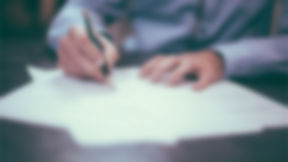Using a third-party DNS service in lieu of your ISP's
- Simon Ang
- Apr 22, 2020
- 3 min read
Updated: Apr 22, 2020
15 April 2020 had been a very disruptive "work from home" day caused by the outage of my home broadband network. The disruption I experienced was about four freaking hours, which my Internet Service Provider (ISP) had pinned down to an outage faced by one of their DNS servers. In retrospect, the interruption could have been nullified with a simple workaround. In this blog I will provide an armchair introduction about DNS and how to point to alternative DNS servers on Windows 10.
What is DNS?

DNS stands for Domain Name Service. It is like an electronic Yellow Pages service to translate a domain name like amazon.com into a series of numbers like 176.32.103.205, also known the IP address. In real life, this is synonymous to translating a building name to its proper location address with street names, city, post code and country. Without the IP address, a user will not be able to reach a particular host on the Internet, thus making web surfing completely catatonic.
How do you know when your DNS service has abandoned you?

Before determining that an outage was caused by a DNS issue, you need to firstly determine if your internet connection is not broken. If you are using Wi-Fi and Windows 10, you can do this by checking the status of your Wi-Fi connectivity. In the screen shot below it shows the status of my Wi-Fi connectivity as “Connected, secured”. If there is no internet service, you will see the status as “No Internet, secured”.
The next thing to do is to run some ping tests to see if you are able resolve common domain names such as google.com, yahoo.com, amazon.com from your computer or laptop. The screen shot below shows a DNS lookup failure because www.channelnewsasia.com is not reachable. Under normal circumstances, you would expect ping to return the IP address of the host.

Repeat the ping tests with other known domain names such as google.com and amazon.com . If the hosts are not reachable, then it can be concluded that the issue lies with the DNS.
Creating a bypass
Usually your ISP will assign DNS servers automatically and you can view the DNS IP addresses on your router login page. Below is a screen shot from my ASUS router with the ISP assigned DNS servers:

Before creating the bypass, you need to find the IP Addresses of public DNS servers that you can use as a substitute. In this write-up, I am going to use the public DNS servers from OpenDNS, which has the following IP addresses:
Primary DNS: 208.67.222.222
Secondary DNS: 208.67.220.220
The steps to create a bypass are as follows:
Step 1 - Access your Wi-Fi settings as follows:

Step 2 - Scroll down until you see the link to “Change adapter options”. Click the link

Step 3 - You will be shown a list of Network Connections on your computer. Choose Wi-Fi and select Properties

Step 4 - Choose the option to change the IPv4 properties:

Step 5 - Configure the alternate DNS servers

Step 6 - Start a command prompt and type ipconfig / all to check on the DNS configuration:

Step 7 - Repeat ping tests on known domain names e.g. google.com, yahoo.com and ensure that these host names are reachable i.e. ping replies with the IP address

Step 8 - open a browser e.g. Google Chrome and start surfing to confirm that normal service has resumed.
Conclusion
The purpose of this write-up is to provide an alternative workaround in a DNS outage situation. Some people opt to use third-party public DNS servers permanently, but this is a matter of personal preference. You can also choose to apply public DNS server addresses to your wireless router, making the use of third-party DNS servers uniform across all your devices. Also, do keep the list of public DNS servers accessible offline - you never know when you'll need them.
References
“StarHub fibre broadband services 'fully restored' after hours of disruption”, Channel News Asia, https://www.channelnewsasia.com/news/singapore/starhub-users-report-internet-service-disruption-apr-15-12643338
